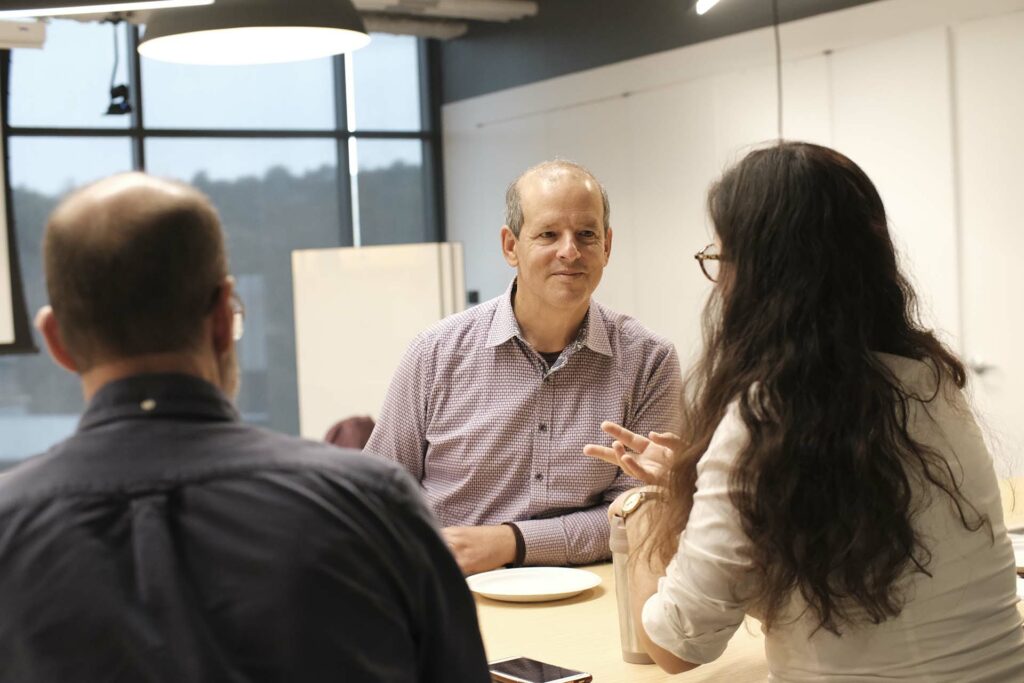Paradigm Shifting
By Stephen Wilson
Climate change. Education inequality. Police profiling. Food insecurity. Equal protection under the law for LGBTQ citizens. Border policies.
The country has issues to solve. While efforts by some to make change are valiant, progress can feel glacial.
Bolder solutions are at the heart of social entrepreneurship, but as Alan Harlam says, “not many people have that title … yet.”
 As founding director of the Social Innovation Initiative at Brown University’s Swearer Center, Harlam was on campus as a guest of Dyer Center for Innovation and Entrepreneurship for an event co-sponsored by Center for Teaching, Learning, and Scholarship and Landis Center for Community Engagement.
As founding director of the Social Innovation Initiative at Brown University’s Swearer Center, Harlam was on campus as a guest of Dyer Center for Innovation and Entrepreneurship for an event co-sponsored by Center for Teaching, Learning, and Scholarship and Landis Center for Community Engagement.
He talked about the what, how, and why of social entrepreneurship, which he called a “structured approach to problem-solving.”
What
Citing books like Going Beyond Better and Common Purpose, Harlam described the stuck and inherently unjust equilibrium that keeps problems from getting better. “As a society, we often offer Band-aids rather than getting to root causes,” he says. “Equilibrium-shifting solutions are needed to forge a new, more stable equilibrium.”
Getting to that new equilibrium requires a few steps:
- Shifting from social service models to social activism and entrepreneurship
- Understanding a problem through cultural immersion
- Building a solution that balances value, cost, and transformative impact
- Scaling a solution to create systematic change
He offered a few examples including Carnegie Libraries, which helped make books available to everyone and thus attempted to use knowledge to improve social and economic mobility. Carnegie did this through a formula that had him build a library if a community donated the land and managed operating costs. As a result, 2,500 libraries were constructed.
How
Harlam listed several examples of Brown University students creating solutions to problems, showing how adjusting the paradigm is possible.
- Healthy Roots: Dolls with hair that black girls can love to braid
- NBA Math Hoops: Using basketball to help low-income students become proficient in math
- Toreva Books: Books for African children that feature African themes, cultures, and characters
- Eye to Eye: Mentoring program for kids with ADHD
Why
“Liberal arts college students learn to harness and enhance their creativity, critical thinking, leadership, and teamwork,” says Harlam. “Higher education institutions have access to support in order to build frameworks for funding, networking, and mentoring. Together, they can provide the preparation, education, guidance, and support to eliminate barriers and forge new ways to change the lives of millions.”
“This ‘third way’ covers various levels of working with community members to improve local outcomes,” says Chris Ruebeck, associate professor of economics and faculty director of Dyer Center. “Harlam noted that when businesses are constrained by the need for profit and governments constrained by the need to be ubiquitous, social entrepreneurs may be able to work with local, embedded knowledge to make more direct progress in addressing society’s needs.”